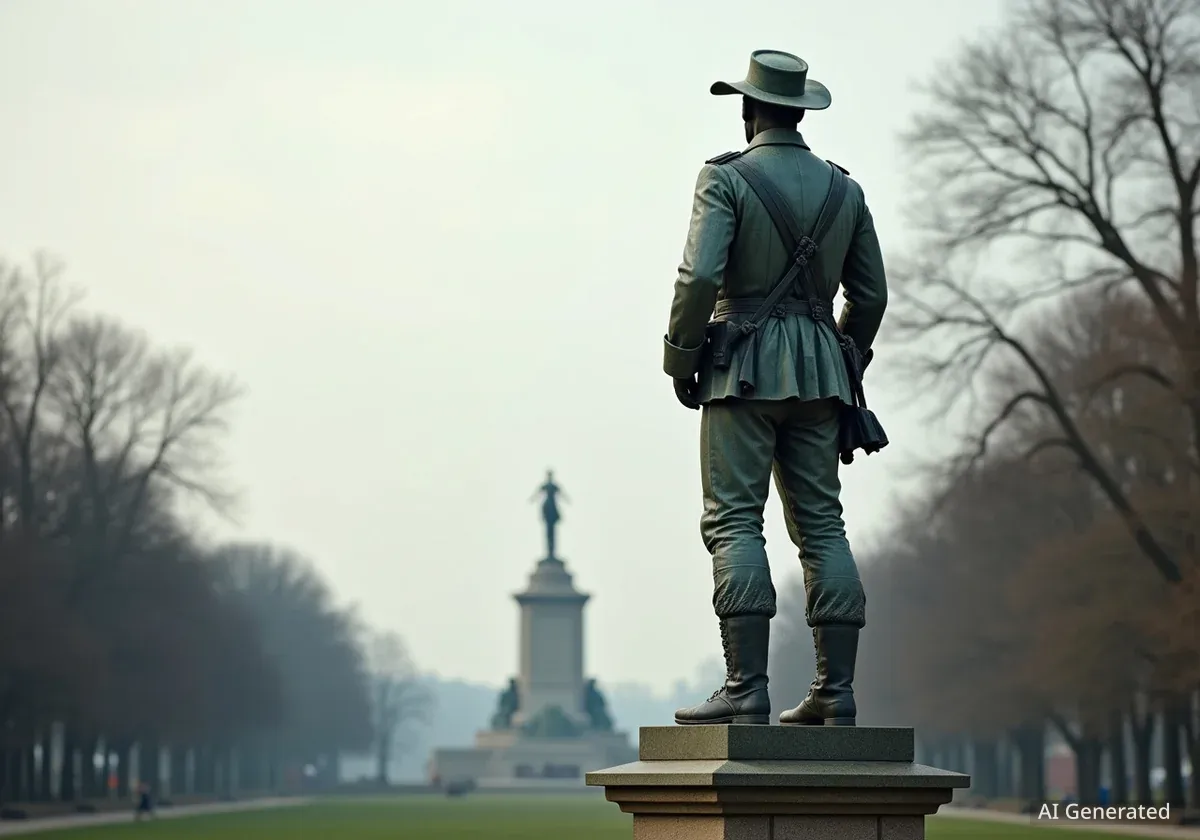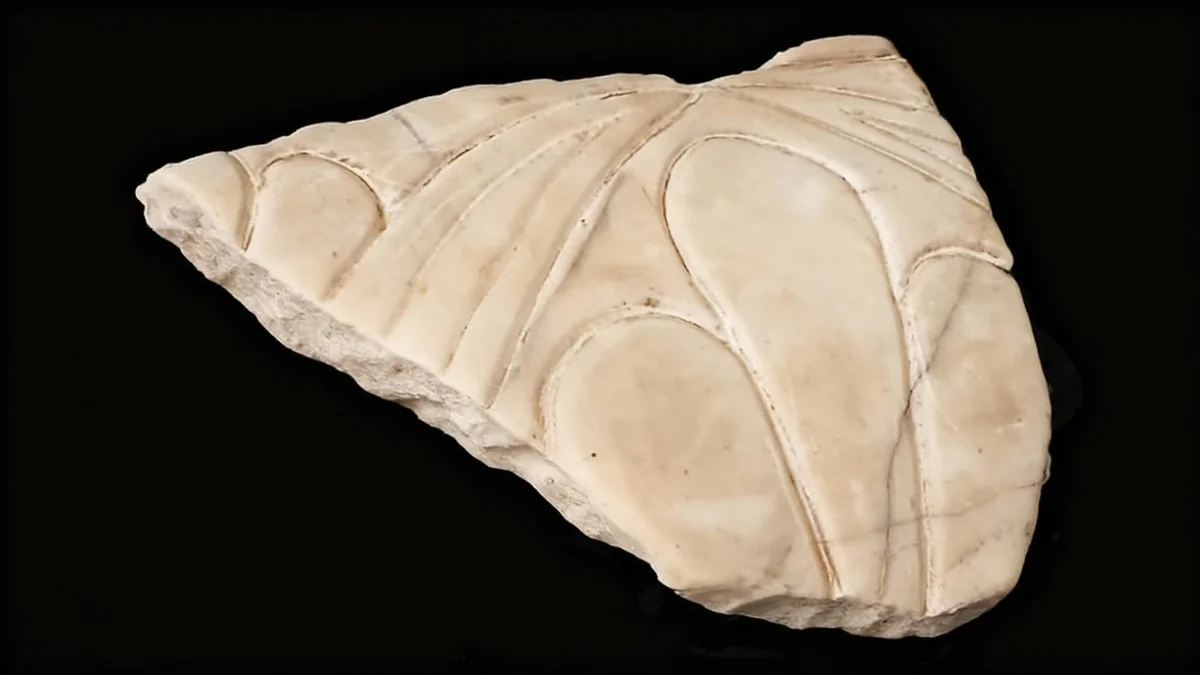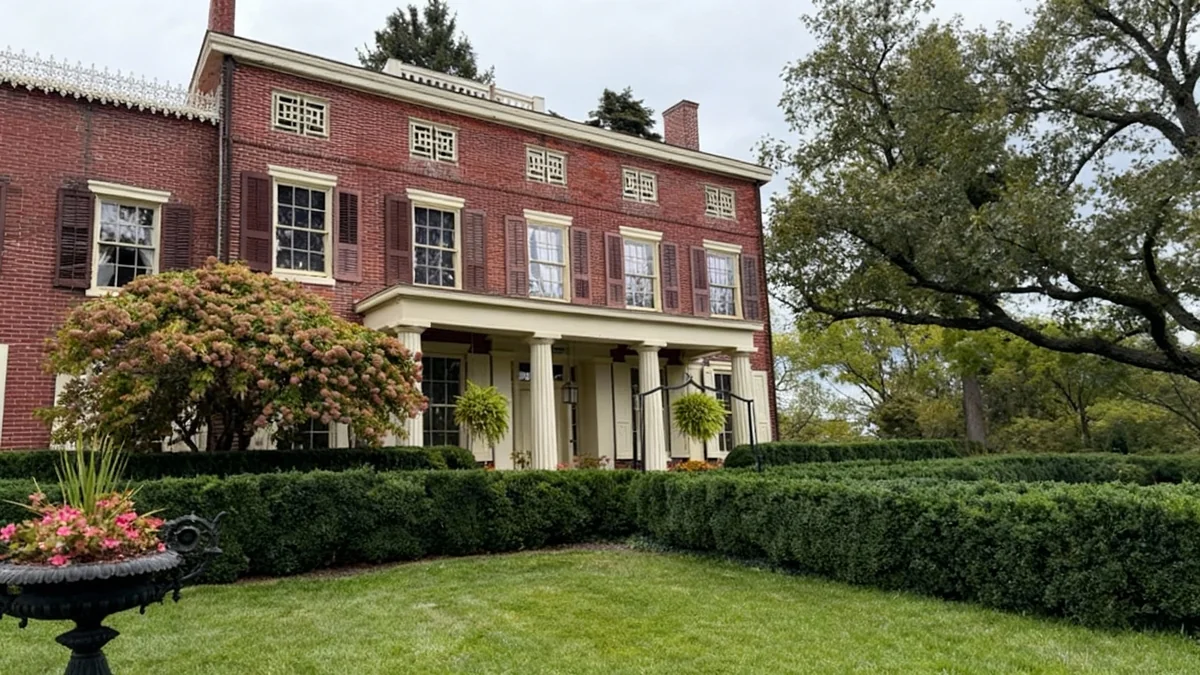Illinois played a significant role in the American Civil War, contributing thousands of soldiers to the Union cause. From 1861 to 1865, the state, represented by Abraham Lincoln, became home to numerous memorials. These monuments, found across Illinois, commemorate the sacrifices made during one of the most challenging periods in American history. They serve as enduring reminders of the state's commitment to preserving the Union and ending slavery.
Key Takeaways
- Illinois was a key Union state during the Civil War.
- Numerous monuments across the state honor soldiers and leaders.
- Memorials range from large statues to mass graves.
- Sites offer insights into military life and political figures.
- These landmarks preserve important historical narratives for future generations.
Lincoln's Legacy in Chicago's Oak Woods Cemetery
Oak Woods Cemetery in Chicago holds a unique place in Civil War history. It is the largest mass grave for Confederate soldiers in the United States. Despite this, it also serves as the final resting place for many Union Army soldiers. A prominent feature within the cemetery is the 'Lincoln the Orator' monument.
This statue pays tribute to Abraham Lincoln, the president who guided the country through the war. Lincoln was renowned for his powerful speeches, including the Gettysburg Address. The monument, first built in 1905, depicts Lincoln mid-speech. It honors his rhetorical skills and also commemorates the Union soldiers buried there. Their service was crucial during this national crisis.
Historical Fact
Oak Woods Cemetery is notable for housing the single largest mass grave of Confederate soldiers in the entire United States, alongside Union burials.
Confederate Mound: A Glimpse into Prisoner Life
Another significant site within Oak Woods Cemetery is the Confederate Mound of 1895. This memorial stands in remembrance of more than 4,000 Confederate soldiers. These soldiers died while held at Camp Douglas, a Union military prison in Chicago.
Camp Douglas was a large facility that housed thousands of prisoners. Many suffered and died from disease and poor living conditions. The Confederate Mound recalls this difficult chapter of the Civil War. It highlights the widespread human cost of the conflict, beyond just battlefield casualties. This site is an important part of understanding the full scope of the war's impact.
"The Civil War was a tragic event that saw the deaths of many to achieve the noble goal of destroying the institution of slavery in the United States."
General John Logan Monument in Grant Park
In Chicago's Grant Park, along the shores of Lake Michigan, stands the General John Logan Monument. John Logan had a distinguished career. He began as a Democratic congressman before the Civil War. When the war started, he left his political role to join the U.S. Army as a volunteer.
Logan served at the First Battle of Manassas. He quickly rose through the ranks, first as a colonel, then as a commander. The statue, designed by Augustus Saint-Gaudens and Alexander Phimister Proctor, was erected in 1897. It continues to be a well-known landmark, honoring his military service and leadership during the war.
Background on General Logan
General John Logan was a key figure in the Union Army. After the war, he returned to politics, serving again in Congress and later as a U.S. Senator from Illinois. He was also instrumental in establishing Memorial Day.
Stephen A. Douglas Tomb: Lincoln's Political Rival
The Stephen A. Douglas Tomb in Chicago honors one of Abraham Lincoln's most notable political rivals. Stephen Arnold Douglas was a long-serving Illinois politician. He famously debated Lincoln for a Senate seat, which Douglas won. The two men often disagreed on the issue of slavery, with Douglas advocating for states' rights to decide its legality.
Despite their political differences, Douglas was a strong supporter of preserving the Union. His nearly 100-foot-tall granite memorial stands as a tribute to his efforts. It features four figures symbolizing "Eloquence," "History," "Justice," and "Illinois." This impressive monument is located at the Douglas Tomb State Historic Site, serving as a reminder of his significant role in American history.
The monument's design reflects Douglas's importance as an orator and statesman. The figures represent key aspects of his public life and his connection to Illinois. Visitors can learn about his complex relationship with Lincoln and his dedication to national unity.
Peoria's Soldiers and Sailors Monument
In Peoria, Illinois, the Soldiers and Sailors Monument stands prominently at the Peoria County Courthouse. Unveiled in 1899, this monument is one of the state's most impressive tributes to Illinois residents who served the Union. Local artist Fritz Triebel crafted the monument in Rome using granite.
The tall pillar is surrounded by bronze figures depicting scenes from the war. These figures include soldiers holding Union flags, a drummer boy comforting a fallen captain, and other servicemen. An eagle with unfurled wings tops the monument. It also lists the names of many Peoria residents who fought for the Union. This memorial effectively conveys the spirit of sacrifice and patriotism.
Artistic Detail
The bronze figures on Peoria's Soldiers and Sailors Monument were sculpted in Rome by Peoria native Fritz Triebel, emphasizing the monument's artistic significance.
Byron's Resilient Soldier's Monument
The Soldier's Monument in Byron, Illinois, is a smaller but equally significant tribute to Civil War veterans. Its construction began even before the war concluded. This monument has endured significant challenges over time. In 1899, it was struck by lightning, and in 1918, it survived a tornado. Its survival through these events highlights its resilience and the community's dedication.
Visitors can appreciate the monument's history before visiting the nearby Byron Museum. The museum offers further insights into Byron's past, including its role in the Underground Railroad and during the Civil War. This combination of monument and museum provides a comprehensive historical experience.
Freeport's Soldiers' Monument and the Statue of Victory
Freeport, Illinois, is home to the Soldiers' Monument, first unveiled in 1871. This limestone obelisk is adorned with figures of soldiers and originally featured a statue of Victory at its peak. In 1960, lightning struck and destroyed the original Victory statue.
A new statue of Victory was added in 2015. This replacement serves as a powerful symbol, reminding visitors of the sacrifices needed to achieve victory. The monument also lists the names of soldiers from Stephenson County who died during the war. It stands as a solemn reminder of the human cost of conflict and the importance of remembrance.
DeKalb County Civil War Memorial in Sycamore
In Sycamore, Illinois, the DeKalb County Civil War Memorial stands in front of the DeKalb County Courthouse. Erected in 1896, this memorial honors those from DeKalb County who fought for the Union. It is located in a small park and features multiple plaques.
Some plaques commemorate specific battle locations from the Civil War. Others celebrate the achievements made possible by the efforts of Union soldiers, including those from DeKalb County. This memorial provides a detailed historical context, connecting local contributions to the broader national conflict.
- Memorial Location: In front of the DeKalb County Courthouse.
- Erection Year: 1896.
- Features: Multiple plaques detailing war events and achievements.
Oregon's Soldier's Monument: A Tribute to Ogle County
The Soldier's Monument in Oregon, Illinois, specifically honors veterans from Ogle County. Sculpted by Lorado Taft and dedicated in 1916, this monument is located in the Oregon Commercial Historic District. It features three statues, two made of marble and one of bronze, all commemorating Civil War veterans.
Nearby, visitors can also see two Civil War cannons, which serve as additional memorials. This collection of historical artifacts is situated on the eastern side of the courthouse lawn. It offers a comprehensive tribute to the local soldiers who served. The presence of both statues and cannons creates a powerful visual narrative of the county's role in the war.
The Lincoln Home National Historic Site in Springfield
For those interested in Abraham Lincoln's personal life and legacy, the Lincoln Home National Historic Site in Springfield, Illinois, offers a unique experience. This site provides a window into the country's past. The home largely retains its original foundation and walls, allowing visitors to step back in time and see how homes were constructed during that era.
Visitors can tour the home with a ticket. The visitor center offers more information about the area's history. Various exhibits throughout the park show daily life during the period. This includes the Jameson Jenkins lot, which was a stop on the Underground Railroad, helping enslaved people find freedom. The site connects Lincoln's personal story to the larger struggle for freedom and national unity.
The Lincoln Home provides a tangible link to the president's formative years. It helps visitors understand the environment that shaped his views on slavery and the Union. The site emphasizes the personal sacrifices made by many, including Lincoln, during this transformative period in American history.
Enduring Reminders of Sacrifice and Freedom
The Civil War was a dark and defining period for the United States. Illinois was deeply involved in this conflict. The many monuments across the state, from small-town tributes to large dedications in cemeteries, serve as constant reminders of the lives lost. These memorials also highlight the profound sacrifices made by countless individuals for the cause of freedom and national unity.
These sites not only honor the past but also offer a positive message for the future. They show that through immense sacrifice, significant achievements can be made. They encourage reflection on the values of liberty and justice that the Union fought to uphold. These monuments ensure that the stories of those who served are not forgotten, inspiring future generations to remember the lessons of history.





